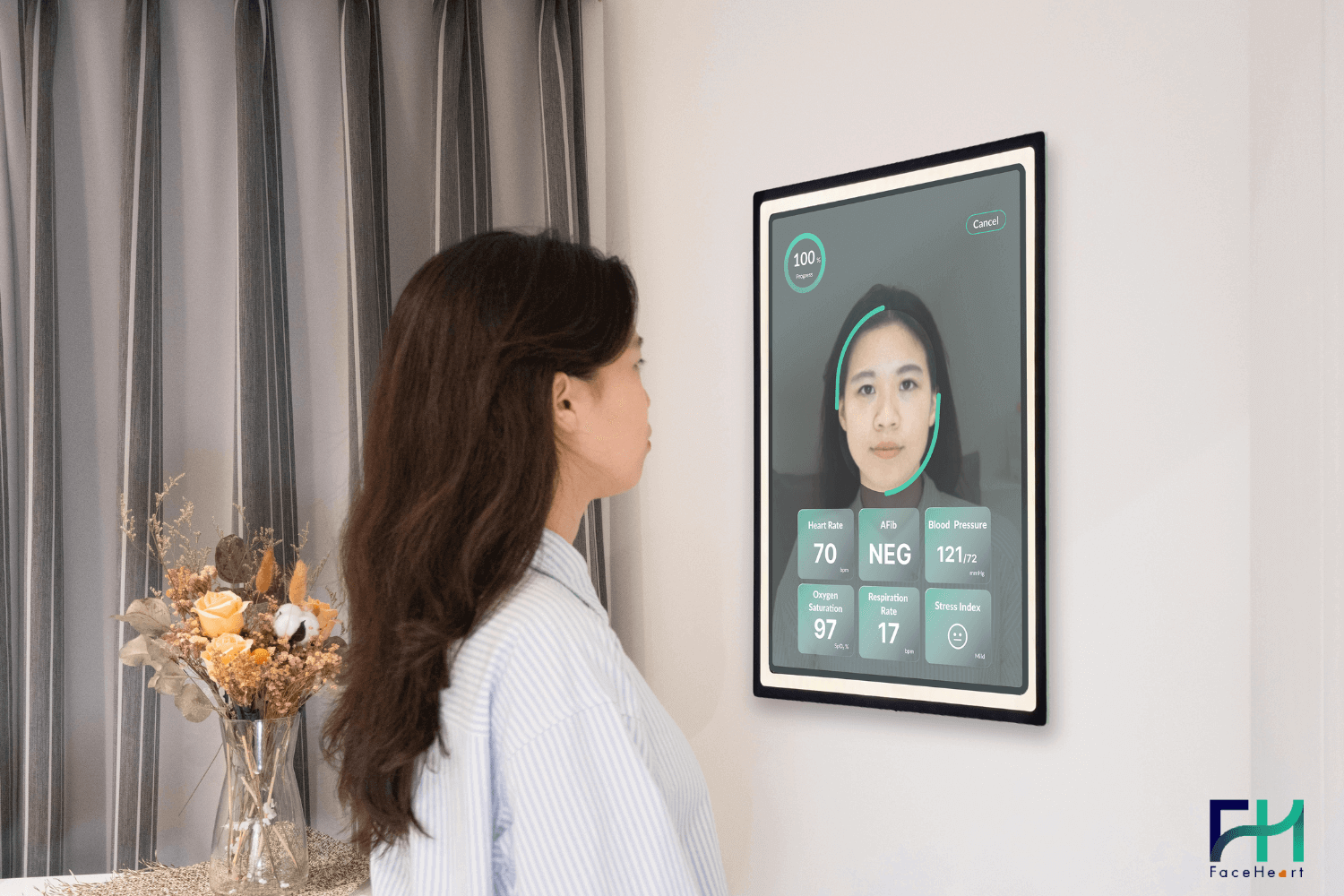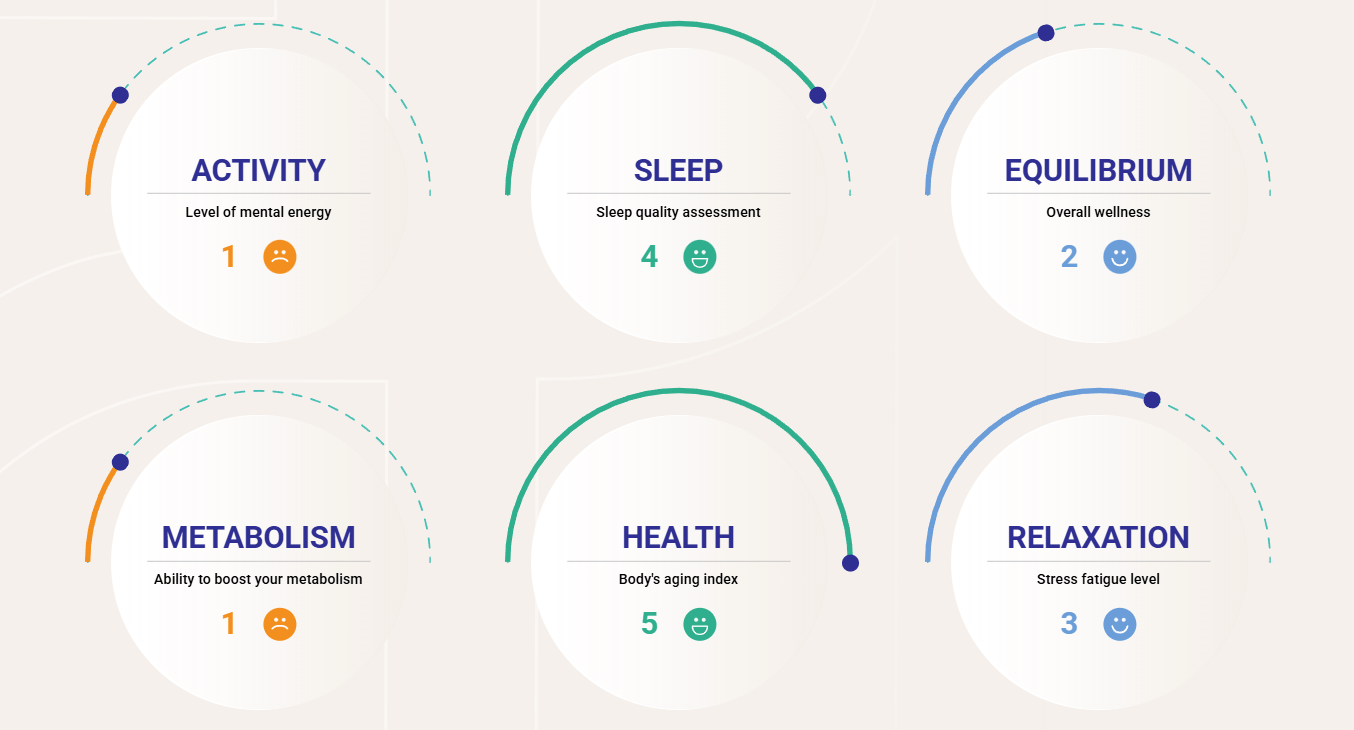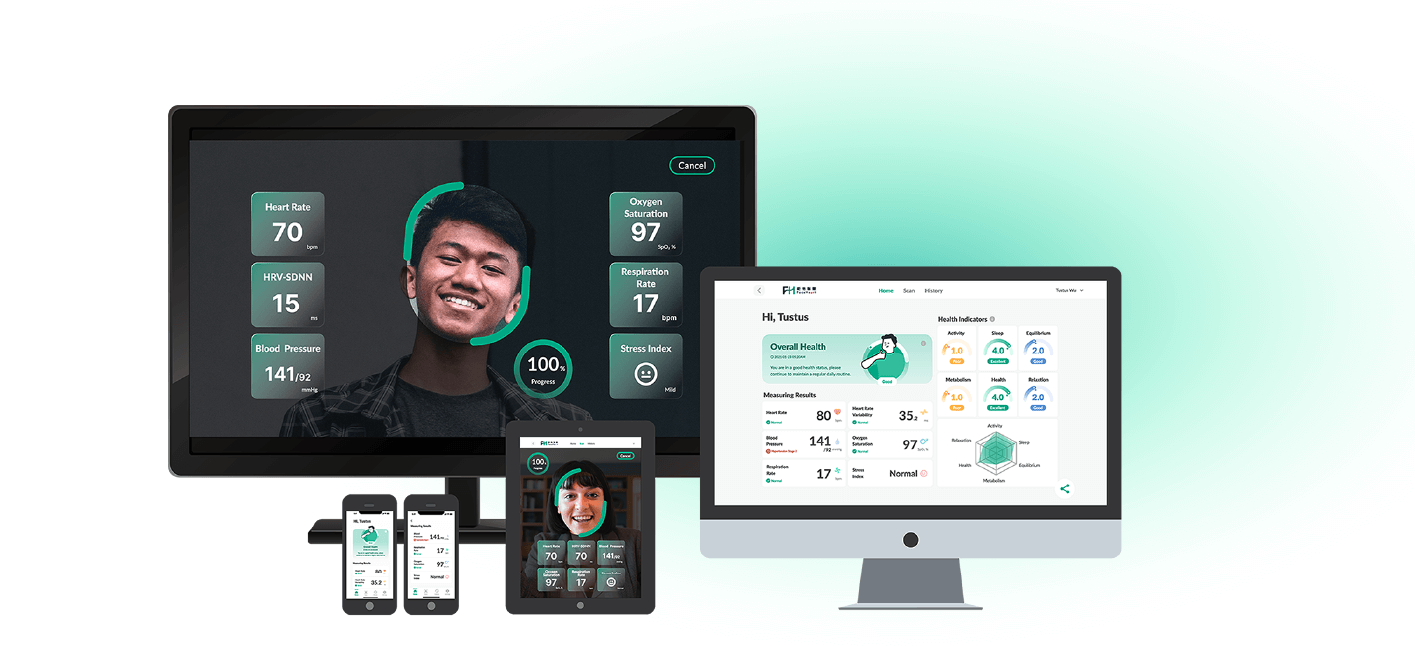
With the rapid speed of technology exposure, remote vital signs monitoring has gradually transformed traditional means in health management and become a key solution for current telehealth and smart healthcare. Real-time examples vary from daily health tracking to inpatient monitoring, which both rely on the integration of various biosensing technologies. This article will introduce the core methods and clinical applications of remote monitoring systems while highlighting their practical value and future potential in the area of contactless well-being improvements.
Generally, health monitoring deploys remote vital signs monitoring systems, whose core strategy lies in the suitable application of sensing equipment and related technologies.The following are the three most common application of sensing technology: Wearable Devices, Contactless Monitoring, and IoT-Based Solutions.
Wearable devices have become integral for personal health tracking and continuous physiological monitoring. Common examples include smartwatches, fitness bands, adhesive health patches, and sensor-embedded garments. These products typically incorporate technologies such as optical heart rate monitors, accelerometers, gyroscopes, or thermometers, enabling the collection of continuous data over extended periods Despite their growing utility, there are challenges remain in ensuring comfort, measurement accuracy, and battery life.
Contactless technology is increasingly prevalent in the medical and health sectors, with remote Photoplethysmography (rPPG) being a prominent example. This technology, without any contact with the skin, lays the foundation for remote vital signs monitoring and is particularly suitable for telemedicine, public health monitoring, long-term care, and remote rural applications.
FaceHeart Vitals™ utilizes rPPG technology to extract subtle, pixel-level color variation in facial tissue, which is often referred to as “micro-blushing.” Using a standard camera, it can accurately estimate physiological data such as heart rate, blood pressure, respiratory rate, and oxygen saturation. This technology, which does not require direct skin contact, offers an ideal method for collecting digital signals in a contact-free manner and is particularly scalable for applications in telemedicine, public health, long-term care facilities, and rural areas, effectively enhancing convenience and patient experience.
The Internet of Things (IoT) devices are extensively deployed in home environments or medical institutions, integrating various types of sensors through networks to perform systematic health monitoring. For instance, smart mattresses can detect sleep quality and respiratory rate, while smart mirrors can analyze vital signs in real-time, providing comprehensive and continuous health data integration and analysis. This approach offers high scalability and integration capabilities, allowing the simultaneous monitoring of multiple health parameters, making it suitable for scenarios requiring holistic health management.
Combining the aforementioned three types of technologies, remote vital sign monitoring systems can cater to diverse usage needs and application scenarios, offering more versatile, precise, and user-friendly healthcare services.
Remote vital signs monitoring is a healthcare approach that uses digital technology and communication tools to send a person's vital signs (such as heart rate, blood pressure, body temperature, blood sugar, blood oxygen, etc.) directly from home to healthcare professionals or care teams. These data are used for monitoring, analysis and better decision-making. The following table explains how remote vital signs monitoring differs from standard health monitoring:
| Remote Vital Signs Monitoring | Wellness Monitoring | |
| Purpose | Chronic disease monitoring, chronic condition management, clinical decision-making | Health promotion, self-tracking, lifestyle improvement |
| Data Transmission | Transmitted to cloud platforms for real-time access by HCPs | Stored on mobile apps or devices; users view data independently |
| Data Accuracy Requirement | High; suitable for clinical medical use | Moderate to low; suitable for general health observation |
| Connected to Medical Records | Yes | No |
| Abnormal Alert | Yes; system can automatically send alerts to HCPs | Usually no alert function; only shows changes in data |
| Regulatory Approval | Requires medical device certification | Regulatory and safety certifications for consumer electronics |
Among the comparison of technology mentioned above, Remote Vital Signs Monitoring is increasingly becoming a crucial trend in healthcare services. By leveraging advanced and digitized sensing technologies, it enables real-time remote transmission and analysis of vital sign data, offering patients and healthcare professionals more timely and precise health management.The following introduces the core technologies used in the remote vital signs monitoring system:
Sensor modules are used for real-time collection of a patient's vital signs, such as heart rate, blood pressure, respiratory rate, oxygen saturation, and body temperature. Traditional monitoring methods often require wearables or contact-based devices. However, a growing number of solutions are leveraging non-contact optical technology (rPPG) and AI vision processing to accurately measure a variety of vital signs using only standard cameras.
The collected data will undergo preprocessing on cloud or edge devices, including noise reduction, data normalization, and data security encryption. It will then be stored in cloud databases or local servers to facilitate subsequent analysis and retrieval.
After data collection and completion of the measurement, it can be immediately transmitted to the cloud server via the communication module if needed. Common transmission technologies include Bluetooth, Wi-Fi, and 4G/5G. High reliability and low latency communication are crucial at this stage to ensure data is transmitted in a timely and stable manner.
In many health monitoring systems, deep learning models are used to analyze patient health trends and anomalies and automatically trigger alerts based on complex data patterns.
Remote vital signs monitoring enables continuous and real-time tracking of multiple physiological parameters, helping HCPs stay informed about a patient’s health status. The table below shows the most commonly monitored parameters:
| Vital Sign | Description |
| Heart Rate (HR) | The frequency of the heartbeat measured by the number of contractions of the heart per minute. |
| Blood Pressure (BP) | A measure of the force that your heart uses to pump blood around your body.; essential for chronic disease management. |
| Respiratory Rate (RR) | The number of breaths a person takes per minute. |
| Oxygen Saturation (SpO₂) | The amount of oxygen you have circulating in your blood.; crucial for monitoring respiratory conditions like chronic lung disease. |
| Heart Rate Variability (HRV) | Analyzes variations between heartbeats, reflecting autonomic nervous system activity; useful for assessing stress response, resilience, and cardiovascular risk. |
| Stress Index | HRV analysis for stress tracking. |

As healthcare system continue to advance through innovation, the clinical value of health monitoring is gaining greater recognition. Real-time monitoring and data analysis enable healthcare professionals to detect abnormalities promptly before the patients' complications become acute , allowing timely intervention and treatment.This approach enhances not only medical efficiency but also improves overall patient outcomes.
For patients managing chronic diseases such as diabetes, hypertension, and cardiovascular conditions, remote monitoring provides continuous tracking of vital signs. It supports both patients and doctors with real-time and accurate data, allowing early intervention and reducing the risk of disease progression and complications.
Research indicates that remote monitoring of vital signs can effectively reduce the readmission rates of chronic patients. Healthcare professionals can receive real-time alerts of abnormal readings from patients, allowing them to proactively intervene and address abnormalities, thereby preventing the deterioration of conditions that would necessitate rehospitalization. This approach closes the health information gap and empowers both patients and providers to deliver safer and more accessible healthcare.
Successful Case Studies:
FaceHeart Vitals™ has partnered with Peru's Grupo Red Salud to integrate into the Salud Selfie on its telehealth management platform. Users can measure heart rate, blood pressure, and other vital signs using just the camera on their smartphone, offering a quick and convenient health management experience.
>>View the Grupo Red Salud x FaceHeart case study
Remote vital sign monitoring is suitable for daily health management of pregnant women and the elderly. Through real-time monitoring, family members and HCPs can track the health of pregnant women and the elderly over time, enabling early detection and management of potential complications and risks. Personalized health plans can be tailored for users based on their vital sign patterns, allowing women and the elderly to manage their health at home and receive timely medical guidance.
Successful Case Studies:
Emagine Solutions Technology has partnered with FaceHeart to empower pregnant women to monitor their blood pressure and other maternal vital signs on The Journey Pregnancy App in a contactless manner without the need of any additional wearables. The combination of telehealth and remote monitoring enables the delivery of tailored health plans with unprecedented precision, allowing women to manage their health from home and receive timely medical support.
>> View the FaceHeart x Journey App Case Study
Employees can conduct regular health assessments using just their smartphone or computer camera, without the need for any medical devices or instruments. By collecting and analyzing this data, companies can implement data-driven health programs that improve employee well-being, reduce absenteeism, and ultimately boost productivity.”
Successful Case Studies:
FaceHeart Vitals™ has been utilized in many of the employee wellness programs. Employees can conduct regular health assessments simply on an app or online platforms without the need for any medical devices or instruments. It has effectively enhanced employee health and increased corporate productivity.
For more information on FaceHeart technology, devices, applications, and systems and a live demo, contact: [email protected]

As the landscape of health monitoring rapidly evolves, FaceHeart Vitals™ leverages cutting-edge AI image processing technology to develop a new generation of contactless vital sign monitoring solutions.
FaceHeart Vitals™ is a global leader in contactless remote health monitoring solutions. Leveraging proprietary remote photoplethysmography (rPPG) technology and advanced artificial intelligence (AI) algorithms, the platform enables real-time, medical-grade measurement of multiple vital signs using only a standard camera—no wearables or physical contact required.
FaceHeart Vitals™ accurately captures and analyzes key physiological indicators, including:
Users only need to look at the camera for 50 seconds —no wristbands, patches, or specialized instruments are needed, making the solution more accessible and user-friendly—especially for the elderly, patients at home, or in high-volume screening scenarios.
The AI engine is trained on clinical data collected from over 36,000 patients. It intelligently processes motion artifacts and lighting noise to maintain stability and reliability in the real-world measurement setting.
Measurement results are instantly available and can be retrieved via API into third-party platforms, such as health management systems, telemedicine platforms, or wellness apps. Please also note that FH does not store any data from users.
By providing real-time, clinical-grade data, FaceHeart Vitals™ empowers healthcare professionals to make timely, evidence-based decisions, enabling personalized care and optimizing diagnosis and follow-up efficiency.
No additional hardware or wearable devices is needed, thus reducing the associated cost. It also offers intuitive and efficient experience designed for different age groups and users.
By leveraging technology, it not only reduces operational complexity but also enhances medical efficiency through automated and real-time monitoring.
SDK/API deployment supports rapid and seamless integration of its plug-and-play modules into existing platforms, strengthing market value and competitive differentiation.
Remote vital signs monitoring collects physiological data—such as heart rate, blood pressure, and respiratory rate—through traditional medical devices, wearable devices, or IoT sensors. The data is then transmitted in real time to computing platforms, where AI algorithms analyze it and provide feedback or alerts. For example, FaceHeart Vitals™ leverages contactless AI-based image processing technology to deliver accurate monitoring using only a standard camera.
Many remote vital sign monitoring devices are designed with user-friendly interfaces, allowing individuals to operate them independently without professional assistance. For instance, FaceHeart Vitals™ requires only a standard camera and features a simple, intuitive setup process—ideal for the general public, seniors, or employees in corporate wellness programs.
Remote vital signs monitoring uses a non-invasive approach that does not require any puncture or insertion of devices, making it a low-risk technology. When using a clinically certified solution such as FaceHeart Vitals™, the process is generally safe, reliable, and suitable for a wide range of users.
The cost of remote patient monitoring (RPM) depends on the device type, service scope, and complexity of features. Basic solutions typically range from $20 to $100 per month, while more advanced programs can cost several hundred dollars per month. Software-only platforms like FaceHeart offer a more cost-effective option by eliminating the need for additional medical hardware.
You can experience FaceHeart’s remote monitoring services through its partner products and platforms. You’re also welcome to follow our event news or contact us directly for a live demo.
For more information on FaceHeart technology, devices, applications, and systems and a live demo, contact: [email protected]